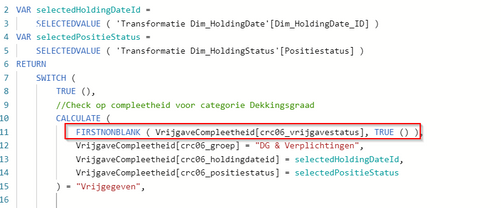Party with Power BI’s own Guy in a Cube
Power BI is turning 10! Tune in for a special live episode on July 24 with behind-the-scenes stories, product evolution highlights, and a sneak peek at what’s in store for the future.
Save the date- Power BI forums
- Get Help with Power BI
- Desktop
- Service
- Report Server
- Power Query
- Mobile Apps
- Developer
- DAX Commands and Tips
- Custom Visuals Development Discussion
- Health and Life Sciences
- Power BI Spanish forums
- Translated Spanish Desktop
- Training and Consulting
- Instructor Led Training
- Dashboard in a Day for Women, by Women
- Galleries
- Data Stories Gallery
- Themes Gallery
- Contests Gallery
- Quick Measures Gallery
- Notebook Gallery
- Translytical Task Flow Gallery
- TMDL Gallery
- R Script Showcase
- Webinars and Video Gallery
- Ideas
- Custom Visuals Ideas (read-only)
- Issues
- Issues
- Events
- Upcoming Events
Enhance your career with this limited time 50% discount on Fabric and Power BI exams. Ends August 31st. Request your voucher.
- Power BI forums
- Forums
- Get Help with Power BI
- DAX Commands and Tips
- Should I even use firstnonblank?
- Subscribe to RSS Feed
- Mark Topic as New
- Mark Topic as Read
- Float this Topic for Current User
- Bookmark
- Subscribe
- Printer Friendly Page
- Mark as New
- Bookmark
- Subscribe
- Mute
- Subscribe to RSS Feed
- Permalink
- Report Inappropriate Content
Should I even use firstnonblank?
I'm using the approach below to filter a table for a specific value (knowing the result is unique) by using Firstnonblank.
Are there any approaches that are more effecient to achieve the same? I'm checking if the line returned contains the value "vrijgegeven" in the particular column.
- Mark as New
- Bookmark
- Subscribe
- Mute
- Subscribe to RSS Feed
- Permalink
- Report Inappropriate Content
Hello,
if you're 100% sure the result will be unique with those filters, you could use another aggregation as well (or no aggregation at all):
CALCULATETABLE (
VALUES/DISTINCT/MIN/MAX ( VrijgaveCompleetheid[crc06_vrijgavestatus] ),
<filters>
) = "Vrijgegeven"
This should work as well, without the need of using FIRSTNONBLANK.
However, be aware of the fact that VALUES will raise an error in the result is not unique (i.e. if you have two or more rows as a result). In that case, an aggregator like MIN/MAX would do the trick
Please let me know if this helps 🙂
- Mark as New
- Bookmark
- Subscribe
- Mute
- Subscribe to RSS Feed
- Permalink
- Report Inappropriate Content
Thanks for sharing your approach Amedeo, this works indeed.
I assuming for now that using firstnonblank in this particular case is not "wrong". I actually felt that there must me be a more suitable approach for this simple task.
- Mark as New
- Bookmark
- Subscribe
- Mute
- Subscribe to RSS Feed
- Permalink
- Report Inappropriate Content
For optimization of LASTNONBLANK and similar functions, please see Optimizing LASTNONBLANK and LASTNONBLANKVALUE calculations - SQLBI.
Helpful resources
| User | Count |
|---|---|
| 25 | |
| 11 | |
| 8 | |
| 6 | |
| 6 |
| User | Count |
|---|---|
| 26 | |
| 12 | |
| 11 | |
| 8 | |
| 7 |



